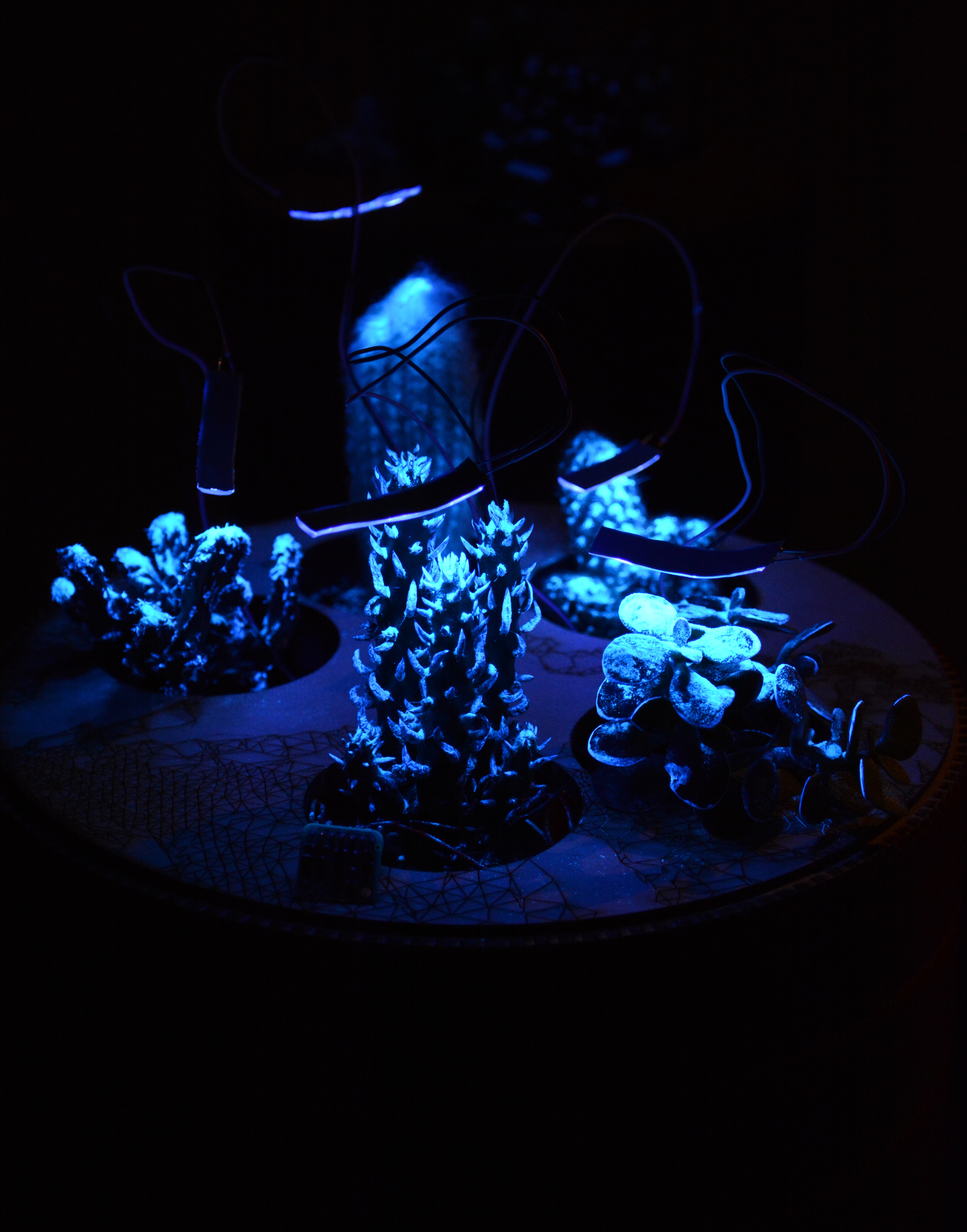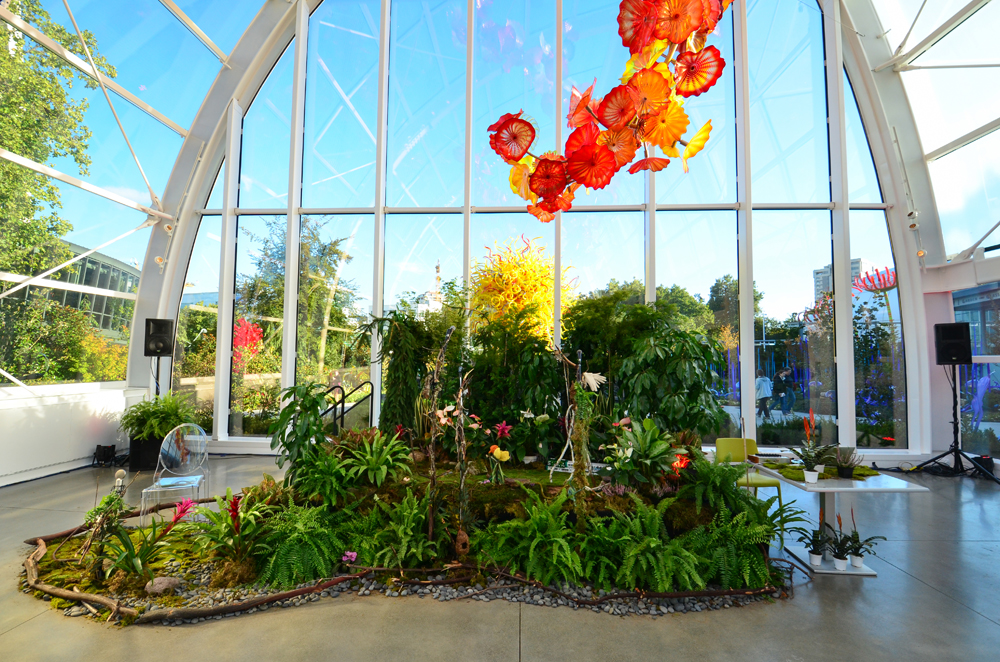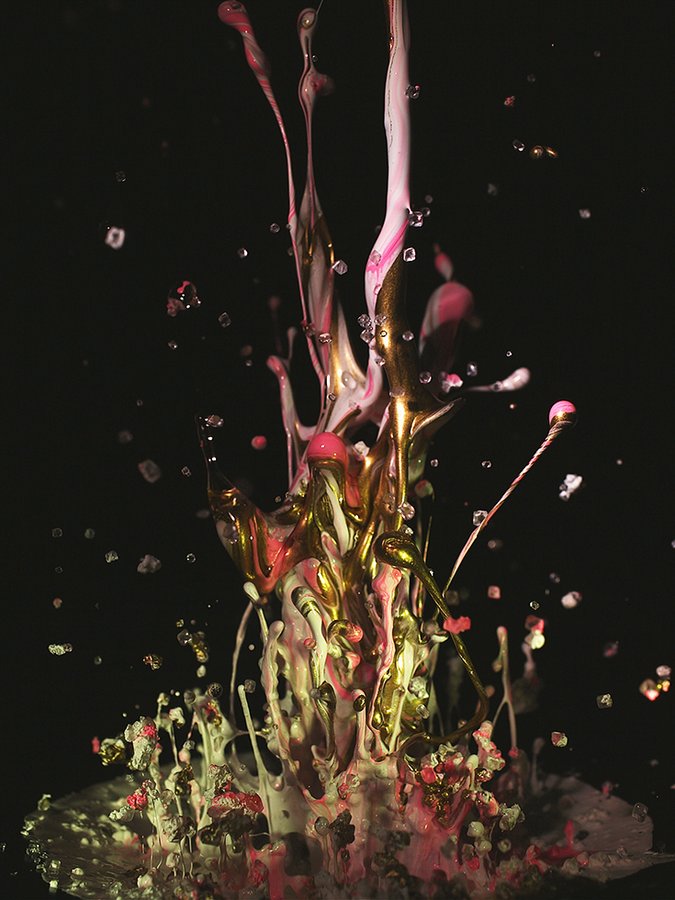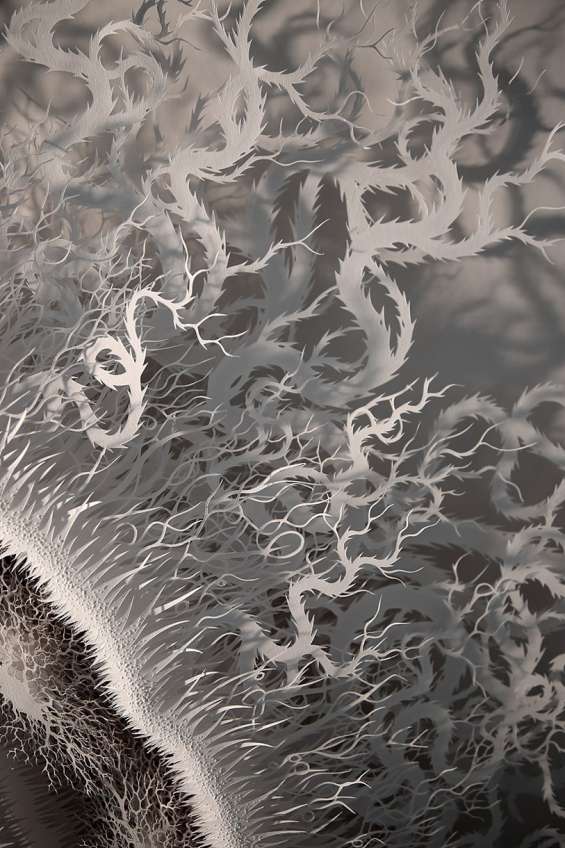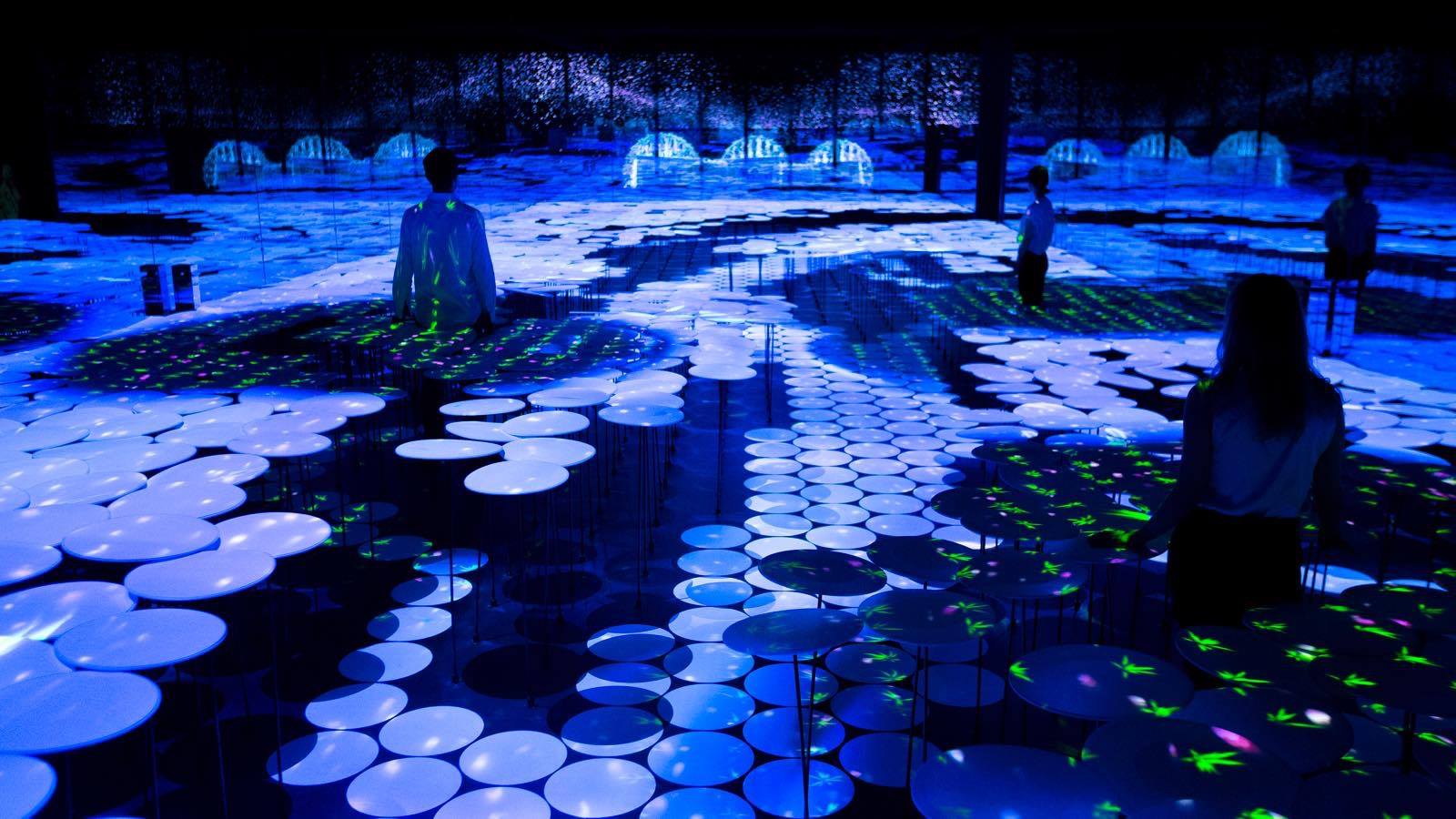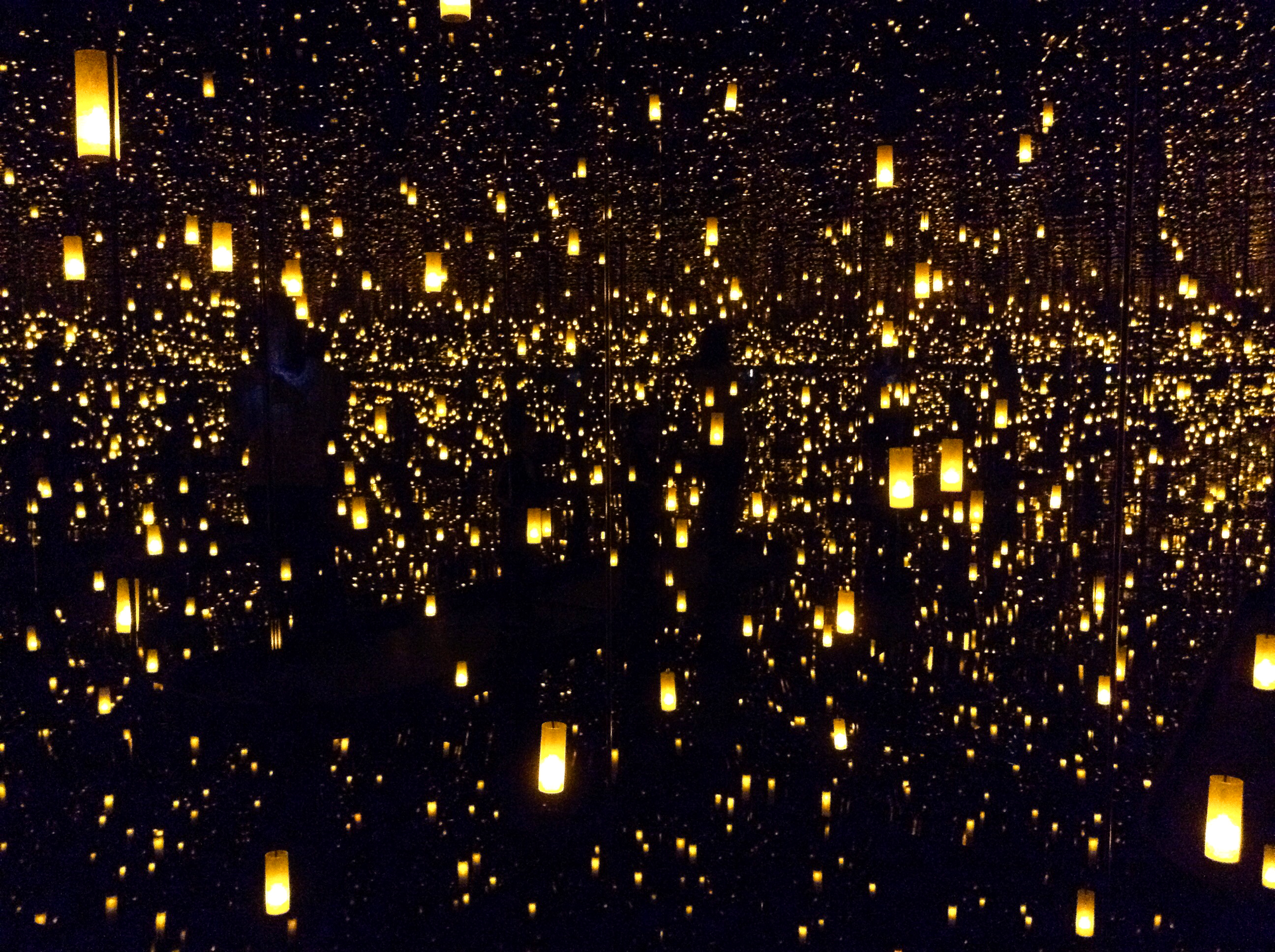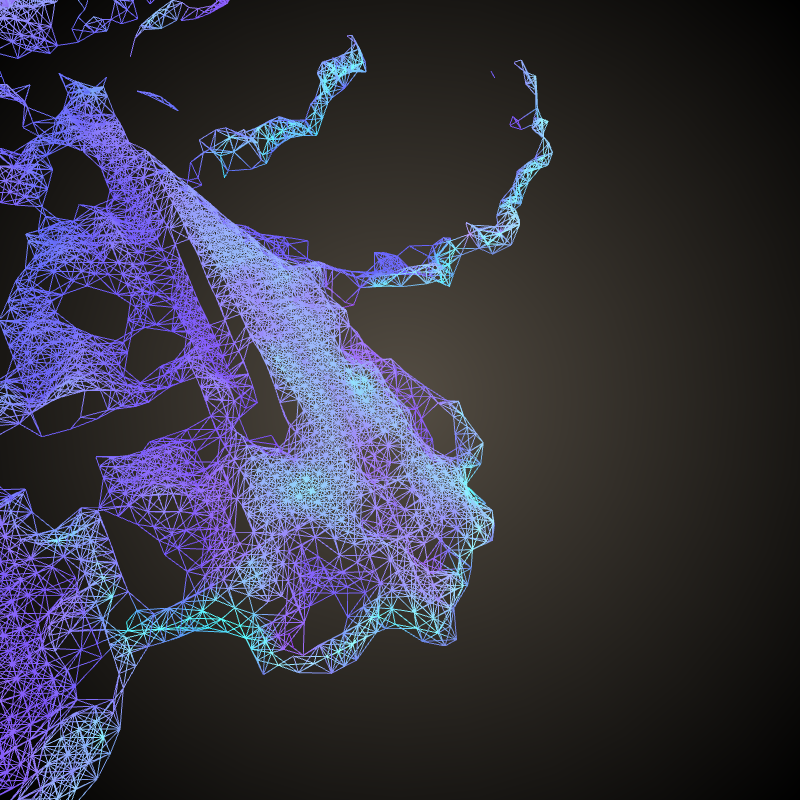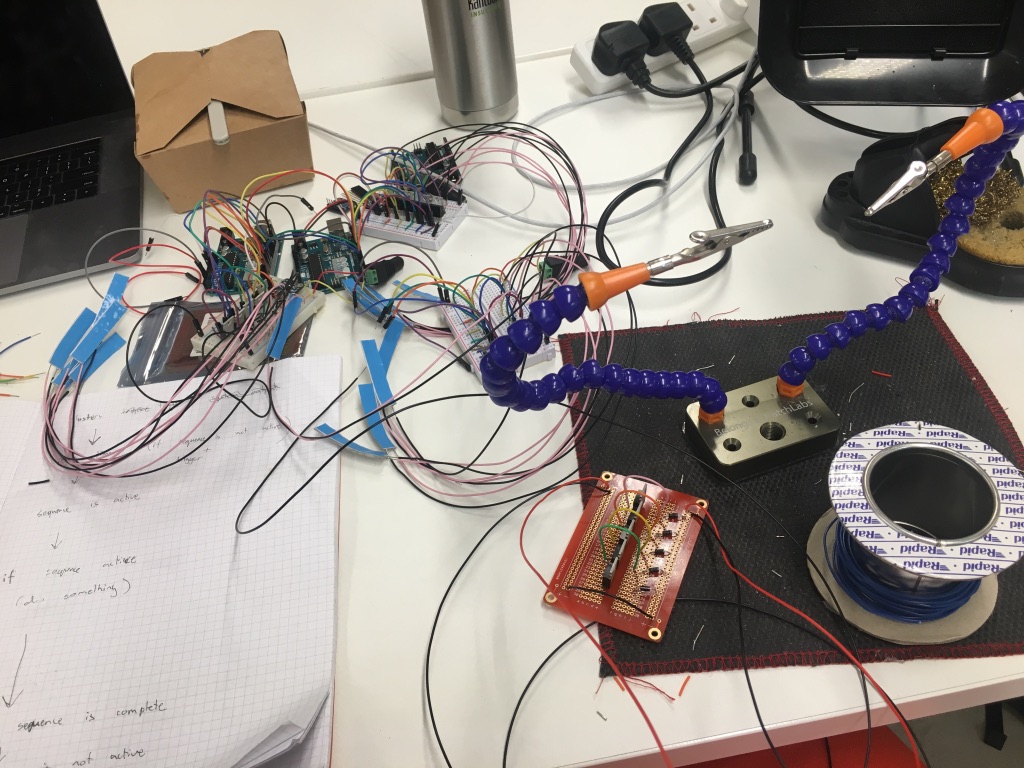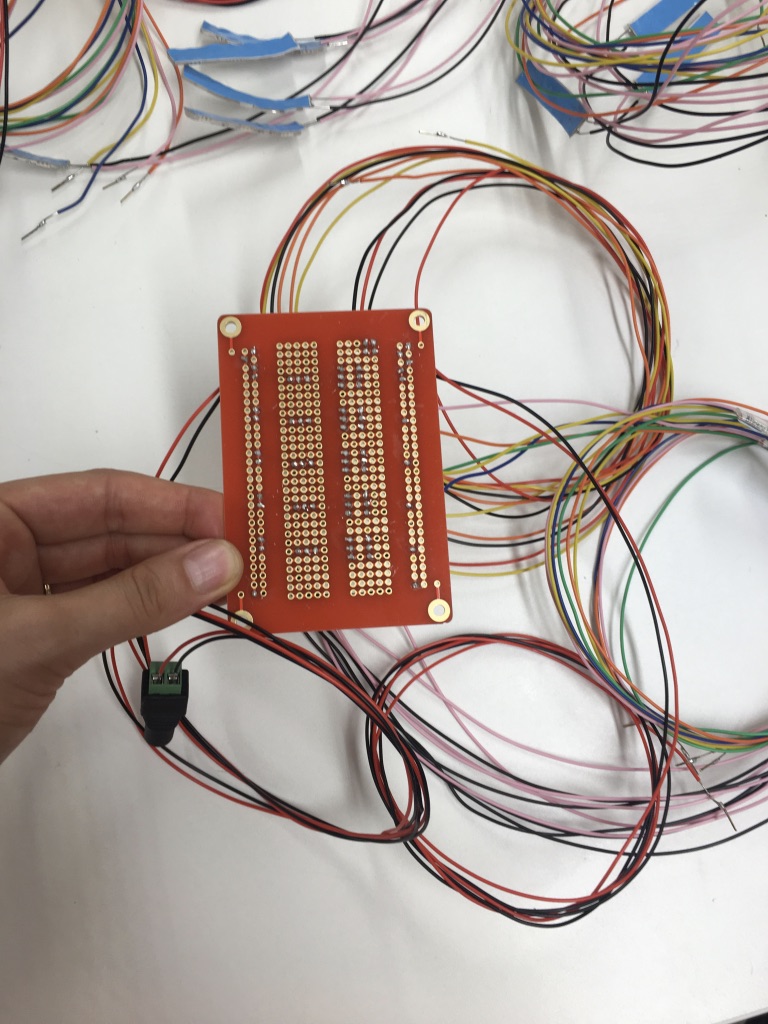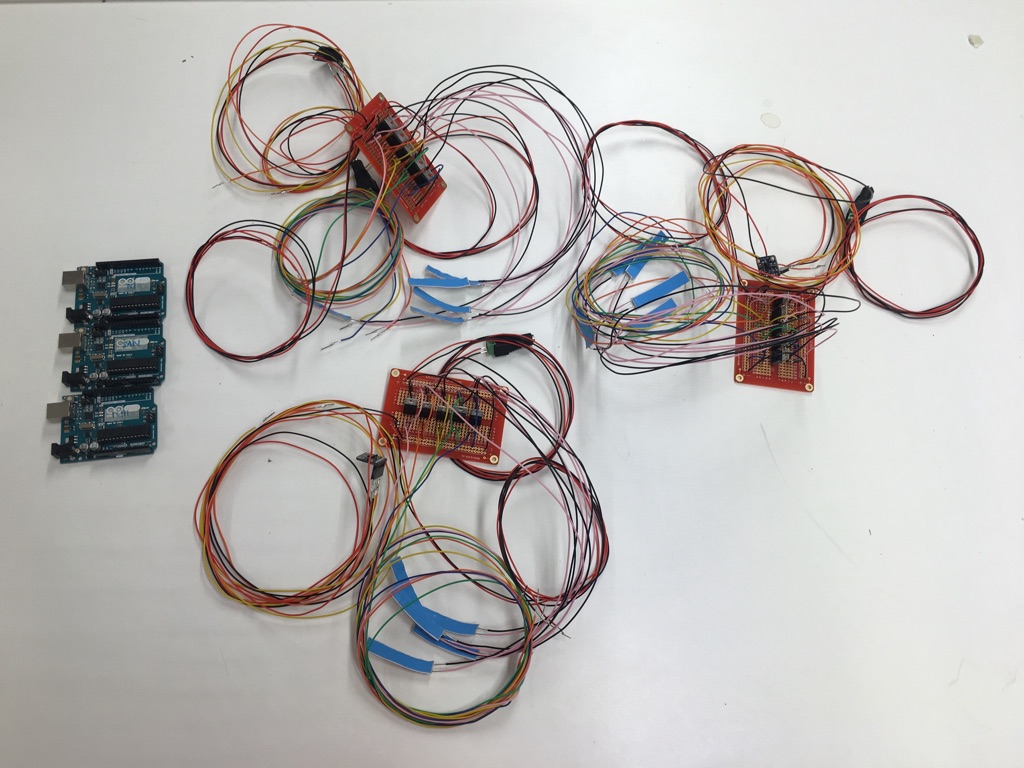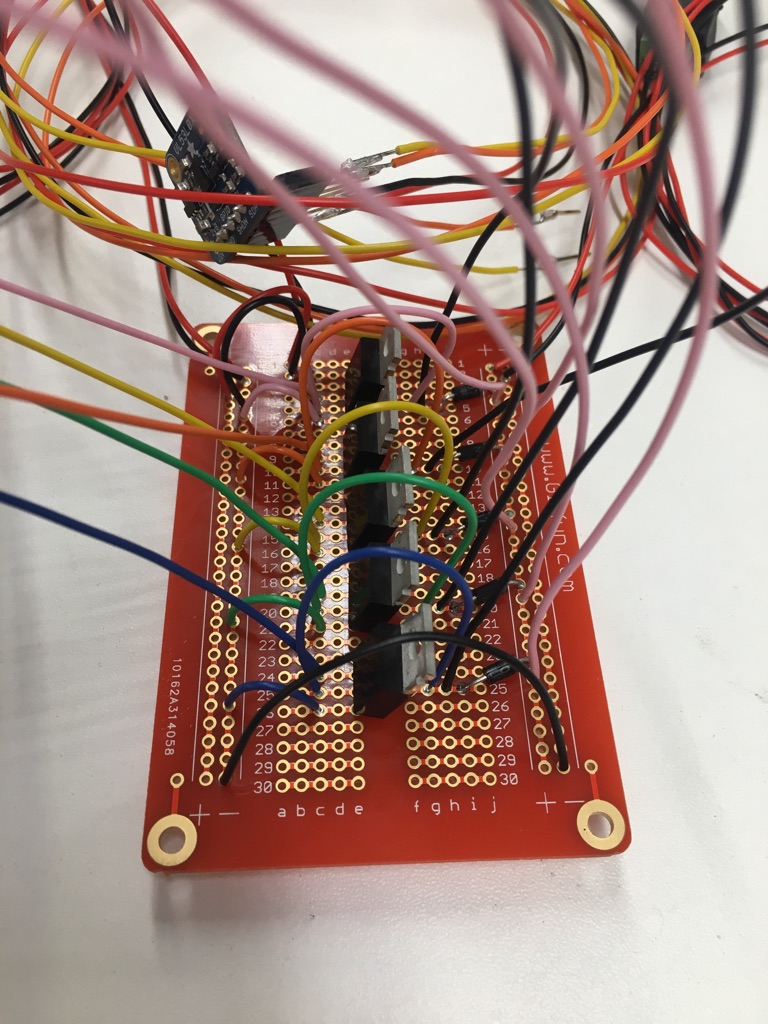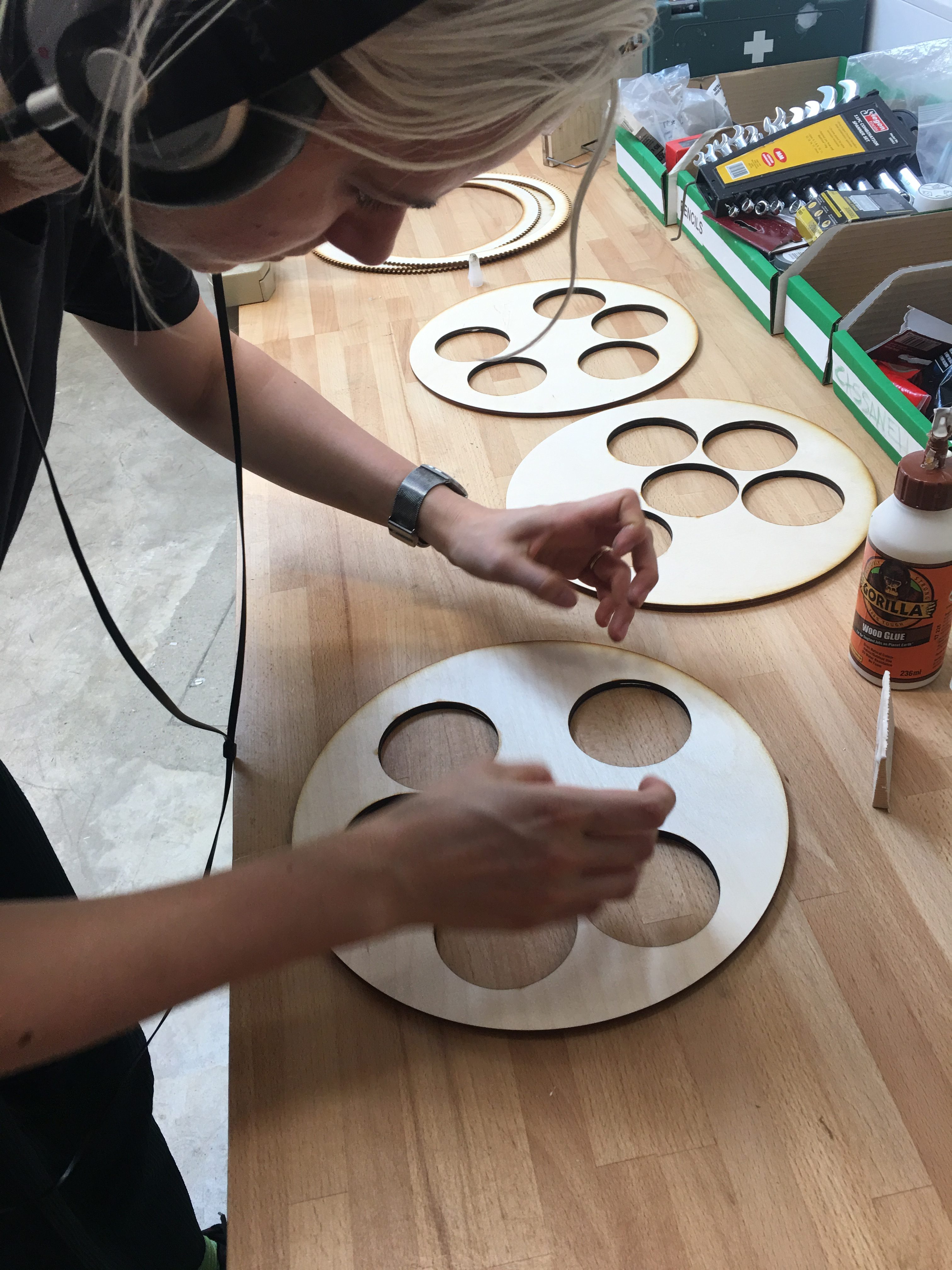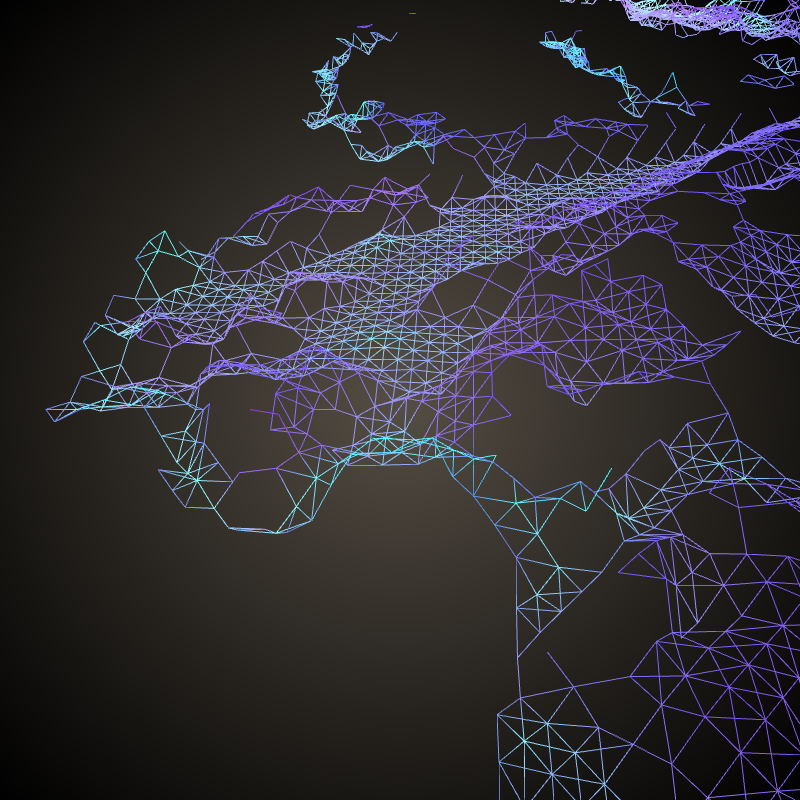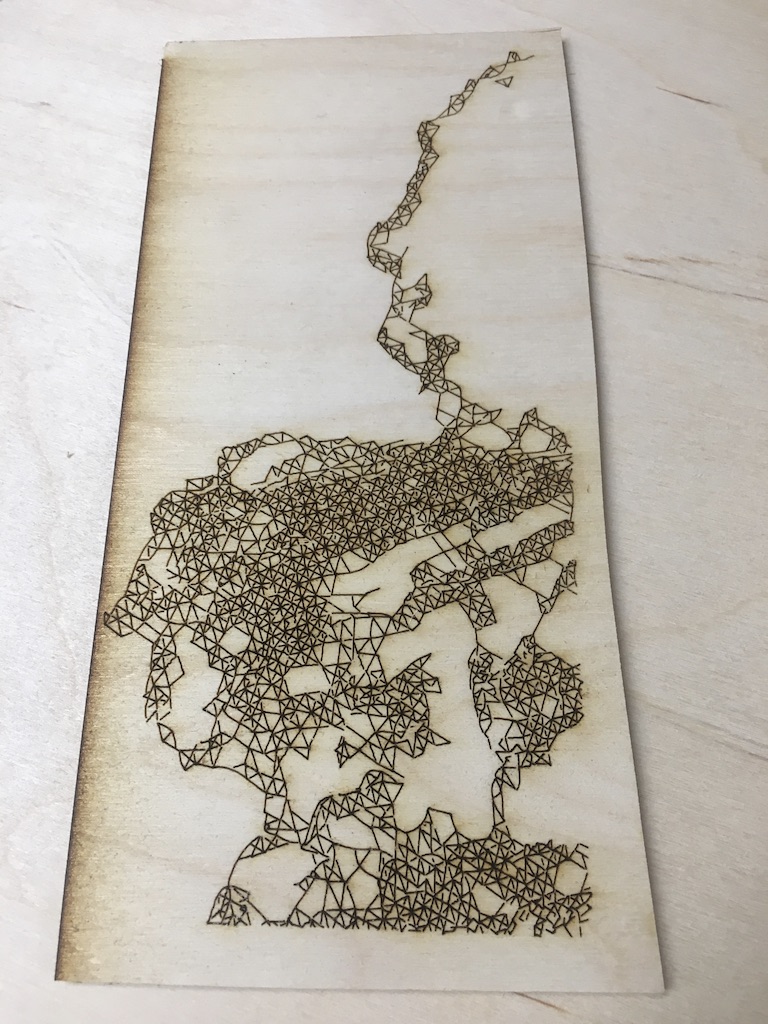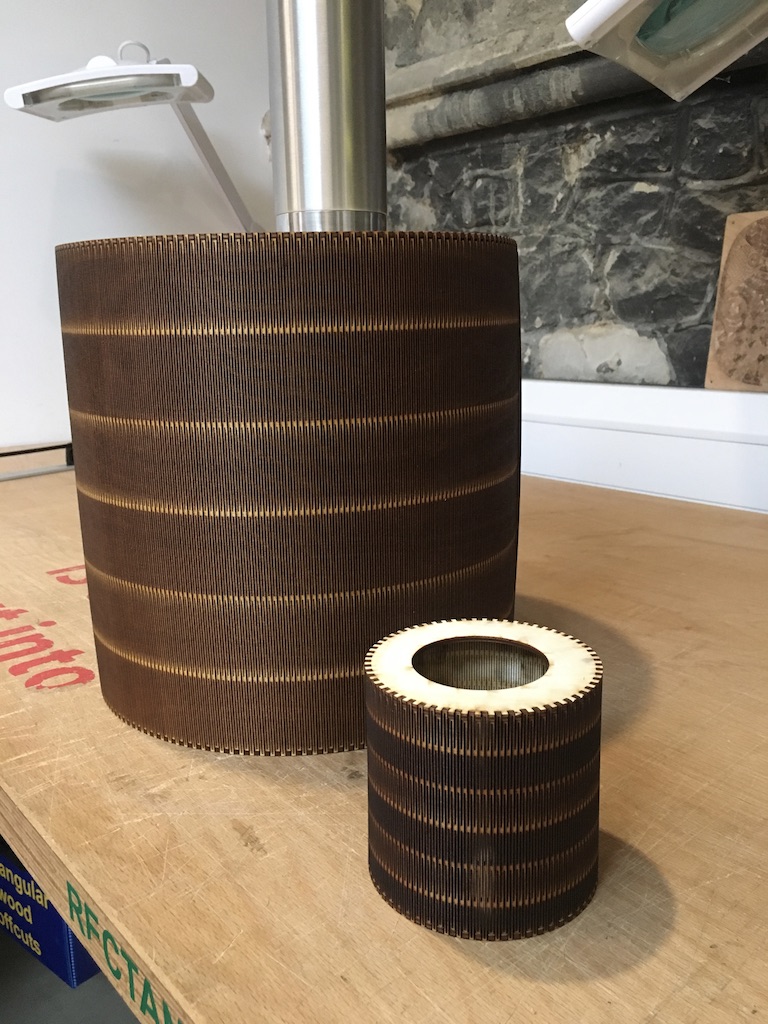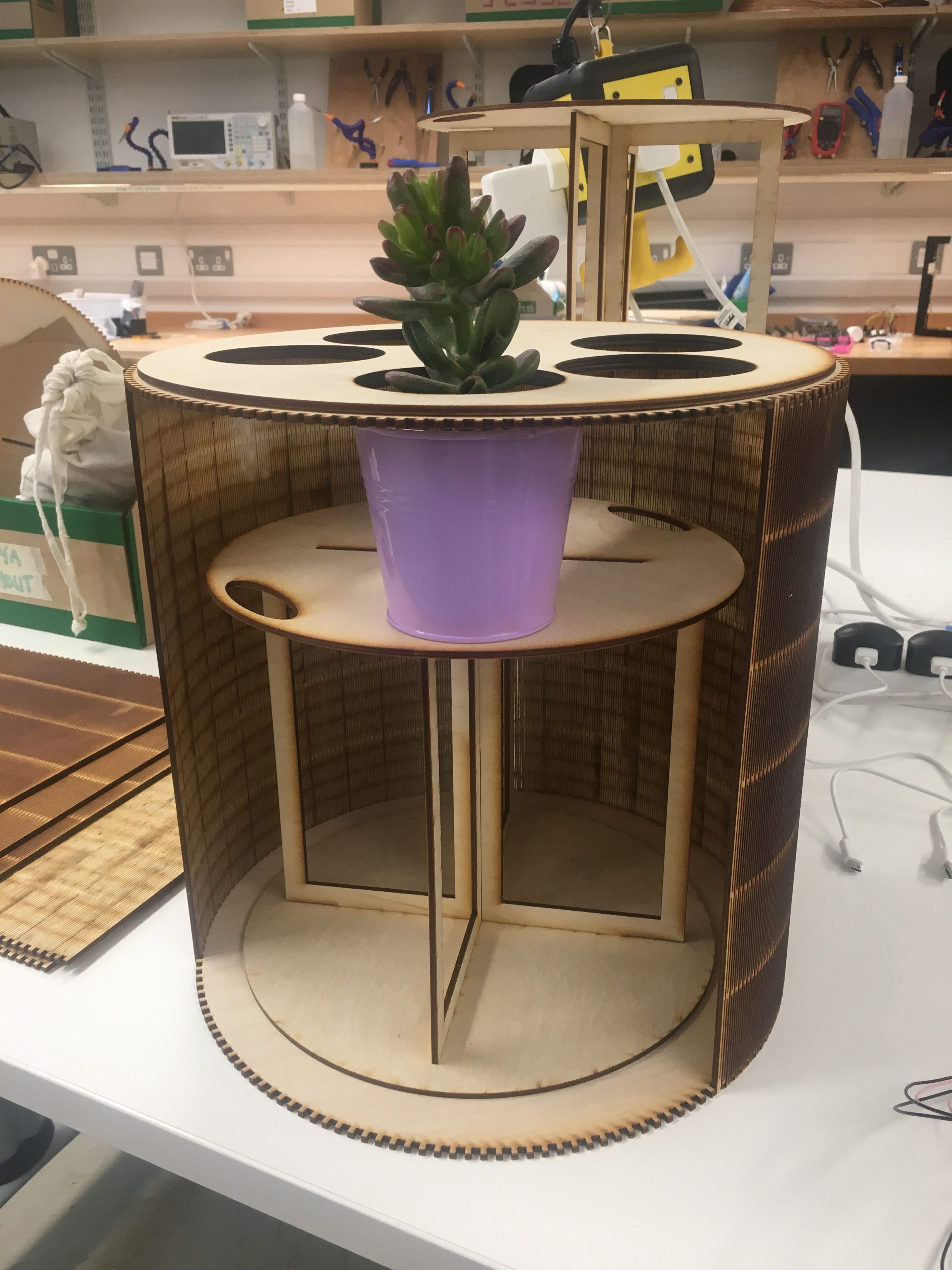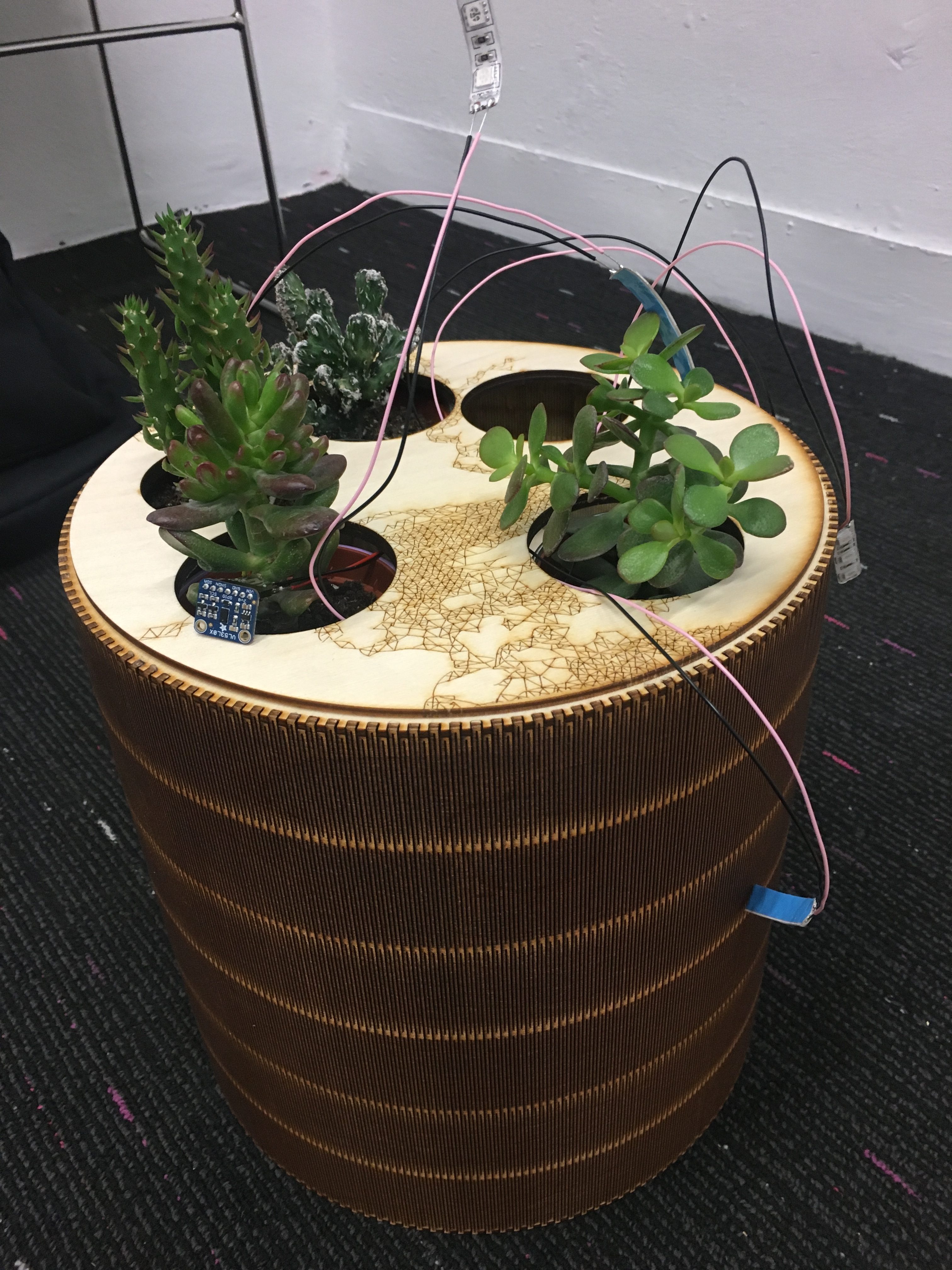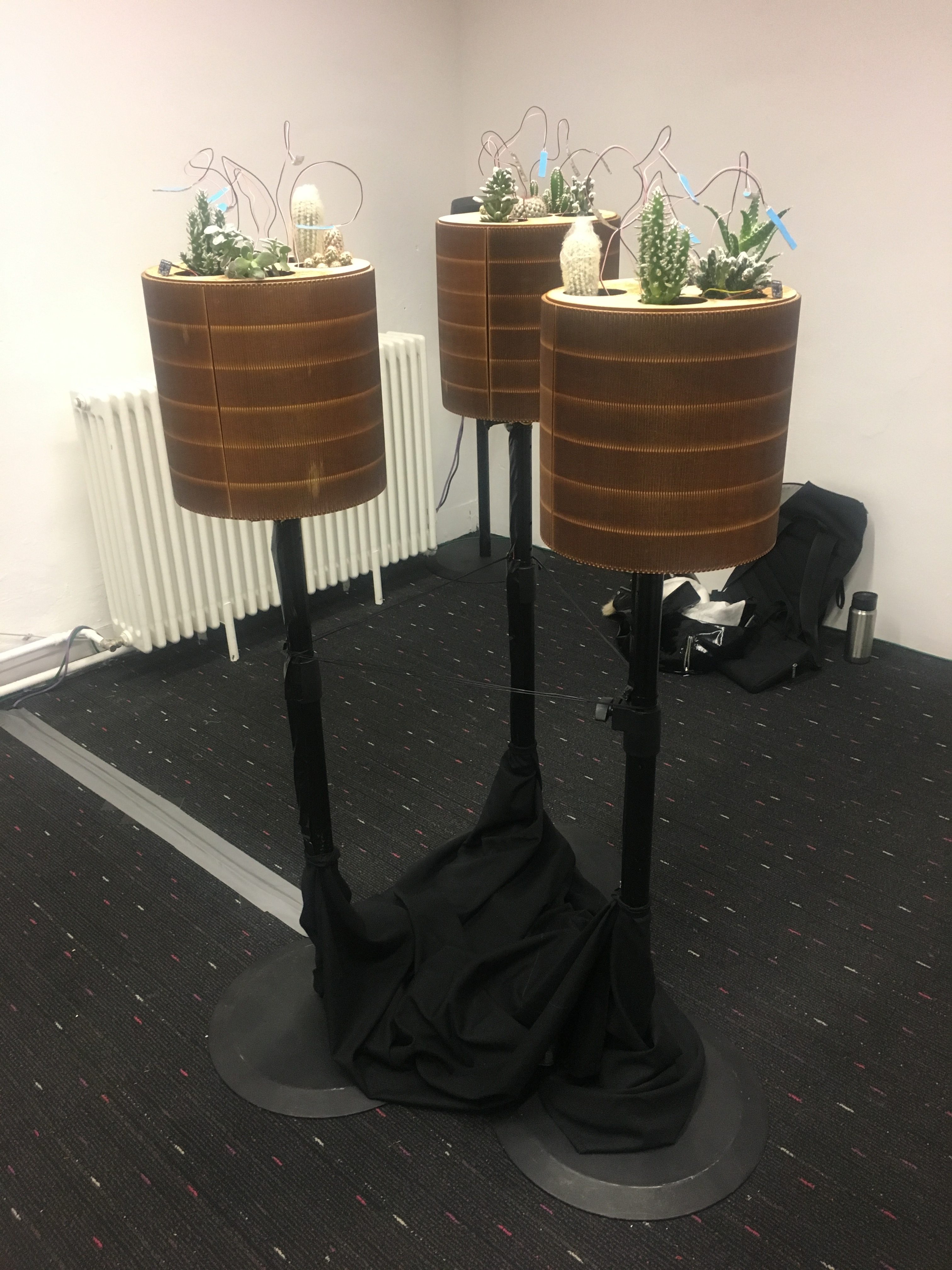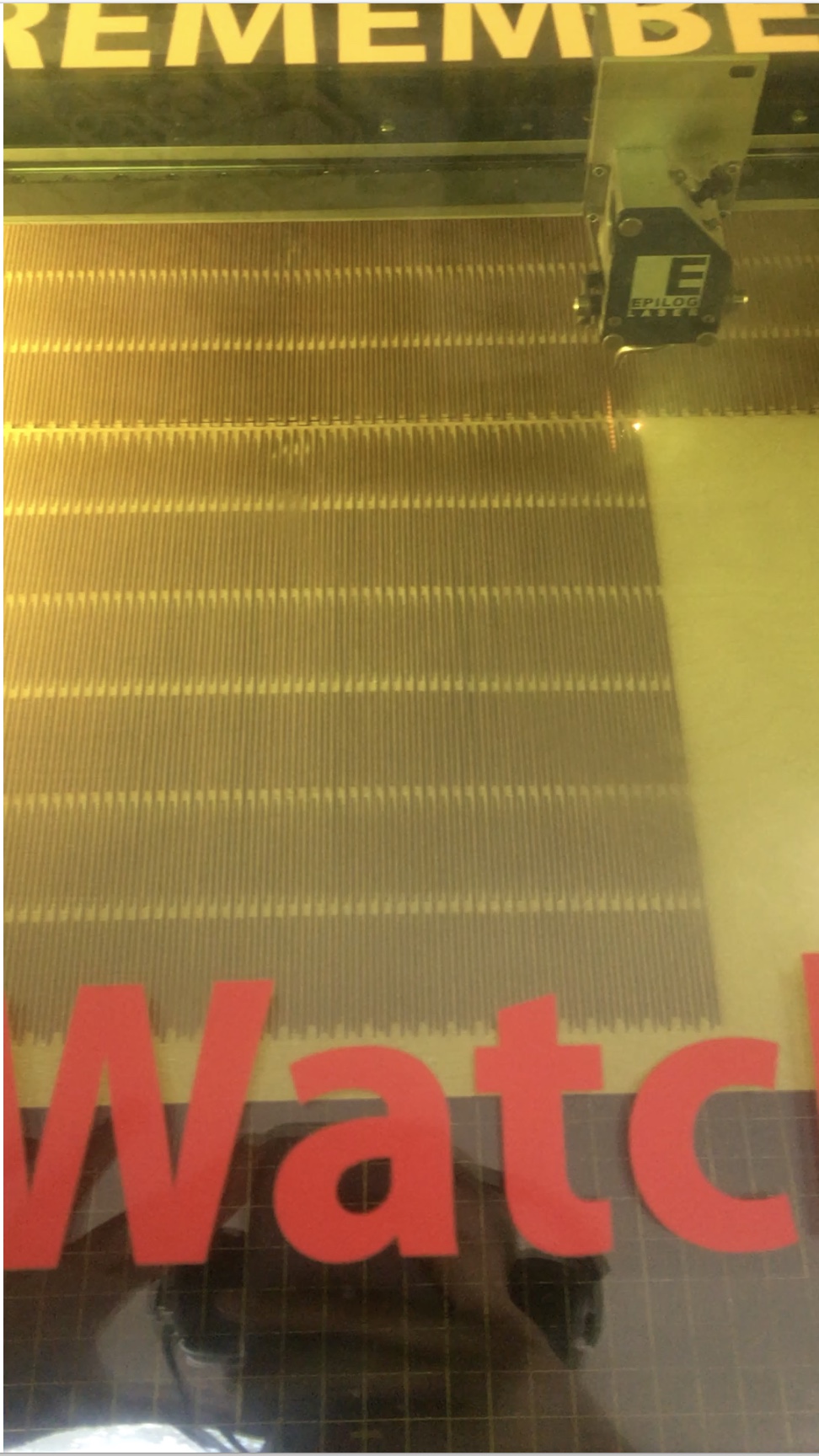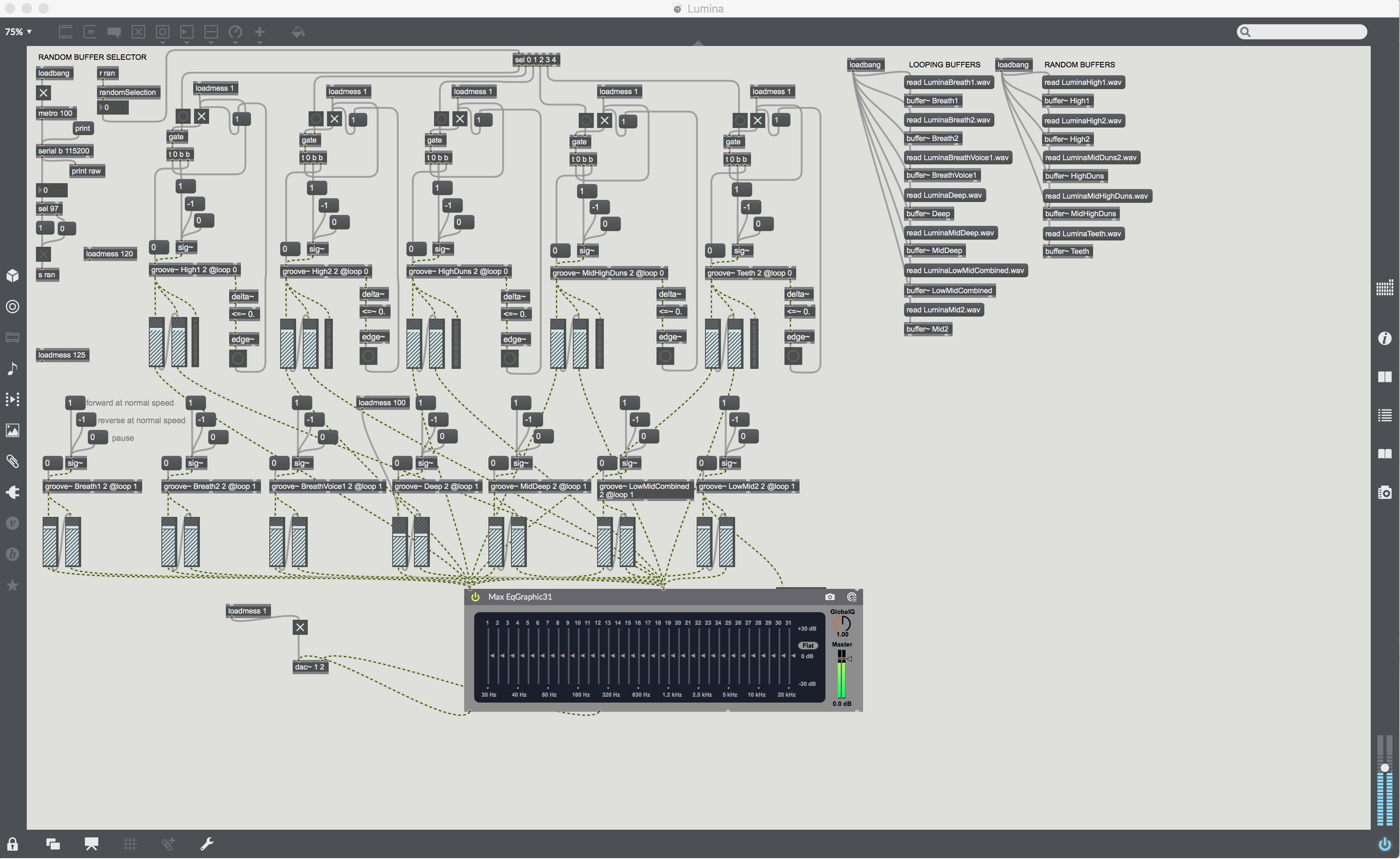Lumina
Lumina is an interactive sound and light installation, a networked bioluminescent garden exploring the relationship between humans and nature. As people approach, the plants respond to their presence by glowing.
Produced by: Freya Berkhout
Introduction
Laser cut elliptical wooden modules house a series of interconnected succulents. As people enter the space, their presence triggers UV light and a soundscape, which begin to breathe, making the networked bioluminescent plants glow. The presence of multiple people in the space will cause the networked lights to exhibit different collective behaviours. The work is intended to create a symbiotic relationship between the plants and the people near them, as the UV light will help the plants survive in their darkened environment.
Concept and background research
Lumina is inspired by a speculative Feminist TechnoScience ideology whereby humans and the natural world have a flourishing, reciprocal coexistence. It is a reimagining of our relationship with nature as a more peaceful, reflective and symbiotic one. The work of sound artist Mileece, Japanese computational artist Naoko Tosa and artist collective teamLab were all sources of inspiration, with a specific focus on how to cohesively integrate elements of the natural world in an inherently technical project. At the heart of Lumina was a focus on instinctive and responsive interaction that mimicked biofeedback from nature, and allowed the audience to explore the space and discover how the organisms would respond to their proximity.
The score was inspired by the work of Björk and film composer Cristobal Tapia de Veer, with specific use of pitched vocals. The entire score was created using my voice or noises made by my body, which was an important conceptual element in creating a sonic palette that was organic and forged a kinship between the physical aspects of the project and the music. The idea behind the music was to create a soundscape that felt meditative and almost chant-like using a set of looping audio files to form the underlying fabric of the score. When the front module’s proximity sensor, the master, got a reading to say someone was over the resistance threshold, it would randomly choose an audio file from a pool of samples to be layered on top of the base score. The randomly selected samples were all much higher in my vocal range, designed to be more expressive recordings that heightened the atmosphere when people were in the space and breathed with the lights.
From a fabrication perspective, Rogan Brown’s paper artwork was an aesthetic consideration, with a very organic and intricate approach to creating physical manifestations of biological organisms. I knew I wanted to create the housings for the plants using plywood, but discovering the technique of creating elliptical boxes by finely laser cutting timber was integral to the aesthetic of my modules. Using a photo of one of my early glowing plants, I created a mesh in openFrameworks and engraved the pattern on the top of the modules, which had an almost tattoo-like effect.
Ultimately, the most important conceptual element of the piece was the idea of symbiosis — that people’s presence would help the plants to survive by providing them with some of what the sun provides, and they responded with their glowing biofeedback.
(Images in order: Mileece, Naoko Tosa, Rogan Brown, teamLab, Yayoi Kusama)
Technical
I began by creating prototypes with Arduinos, Adafruit proximity sensors and spliced and soldered UV LED strips. My initial intention was to use radio frequency for the Arduinos to communicate, however I began experimenting with my own wifi network using Particle Photon microcontrollers, using the Particle browser IDE (in C++). I worked with the Photons for a month, and had a really beautiful networked LED behaviour working, however the wifi became extremely unreliable, meaning that the Photons were unable to stay online long enough to publish their messages and subscribe to each other’s prompts. After much debugging, and a brief look at OSC communication, I decided a wired Arduino approach using pulse width modulation for the LEDs would be the most responsive and robust for the exhibition. This proved to be a very good move for the four days of the exhibition, as the Arduinos were reliable and ran smoothly the entire time.
My first port of call was testing as many theories as I could find that would ostensibly make plants glow — tonic water, glow fluid through stems and injecting directly into the stems. None of these approaches had the desired effect, and instead I worked with neon paint and bioluminescent powder, which was naturally charged by the UV light and glowed even without UV to incredible effect.
I spent a lot of time at the outset of the summer on the fabrication of my modules, prototyping and tweaking my elliptical box design with much experimentation with cardboard and plywood. I knew that the modules and internal structure to hold the electronics and plants would be crucial to the feasibility of my project from both a physical and programming perspective.
Another aspect I focused on early in the process was the mesh made in openFrameworks which would eventually be laser cut onto the top of the modules. This element was also important to me because it was a tangible way to bring some graphics coding into a project that wasn’t screen-based.
For the music, I started out using SuperCollider, and had a working prototype with the proximity sensor sending serial information to SuperCollider through the Arduino, however it soon became clear that Max/MSP, a programme I have spent more time with, would be more reliable. I worked on creating a robust Max patch that could handle the looping and randomly selected buffers to create the fabric of the score.
In the end, the technologies for my entire project comprised openFrameworks for the engraved mesh on the modules, proximity sensors to trigger the spliced UV LEDs, Arduinos to manage the physical computing and send serial data to Max/MSP, and Max handled all the sound elements in Lumina.
Future development
The piece is entirely scalable, and could be expanded upon by creating bigger or more modules, or potentially even one or more bigger structures. In the future I would love to explore individually addressing each UV LED to create really intricate lighting patterns. Should I want to focus more on the bioart elements of the piece, it would also be fun to work with a biologist to create bioengineered plants that glow without bioluminescent powder, so that the glow truly comes from the inside of the plant. I would also love to expand the sound of the piece to have sonic elements triggered by each module and a quadraphonic or octophonic speaker design that explores the spatiality of the sound. It would also be interesting to pursue the wifi route and create wirelessly networked modules. As a way to explore a Post-Colonial Theory angle in future, I am also interested in using site-specific native plants to anchor the piece to an exhibition location and examine the politics and history of native flora, especially in Australia.
Self evaluation
I was extremely ambitious with this project, and had to make some tough artistic and technical compromises along the way, but eventually created a work that I am so proud of. Starting early in the summer was pivotal in being able to explore some new technologies as my project progressed, even if they were later abandoned. Using the Particle Photons, although initially promising, was a technical challenge, and led to a host of physical computing and internet problems that proved too deep to fully understand during this project's timeline. Similarly, I am proud that I experimented with SuperCollider, and learned a lot along the way, even though I eventually came back to Max/MSP. One of the most important lessons I learned on this project was the ability to know when to leave an idea or process behind, especially when problems can be solved by using robotics or a programming language more native to you.
Watching people interact with Lumina at the Echosystems exhibition was a joy. I was both apprehensive and excited to see how individuals would explore and discover the interactive elements, and I feel like I created a work that was intriguing yet intuitive, which is everything I could have hoped for. Through the ups and downs during the process, I was mindful that the most important thing was to achieve my artistic vision, and I truly feel I was able to bring my idea to life.
References
+ Arduino guidance:
https://www.arduino.cc/reference/en
+ oF Mesh:
https://openframeworks.cc/ofBook/chapters/generativemesh.html#basicsofgeneratingmeshesfromanimage1
+ LEDs:
https://www.youtube.com/watch?v=bTRLt-fzTwg
+ Elliptical Boxes:
https://www.instructables.com/id/The-Ultimate-Guide-to-Laser-cut-Box-Generators/
+ GitHub:
https://github.com/fufuchan
+ Art, Activism, and Technoscience by Beatriz da Costa and Kavita Philip, Tactical Biopolitics, 2008
+ Environmental Sensing Technology and the Making of a Computational Planet by Jennifer Gabrys, Program Earth, 2016
+ The Valuation of Nature by Kathryn Yusoff, Radical Philosophy, 2011
































































